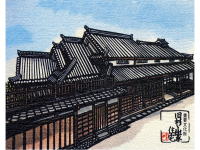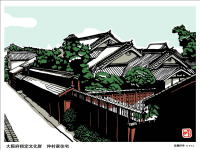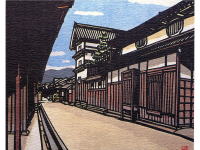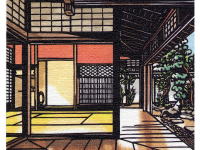富田林寺内町の探訪
I'm glad to intorduce an old town, Jinaimachi, Tondabayashi, Osaka, Japan as a national historic district and heritage site.
It takes 30 minutes from Osaka city to Tondabayashi station by Kintetsu railways. A 10-minutes walk will take you to the historic town.
ギャラリー
Koushouji Betsuin Temple, National important cultural property
| 【Tourist guide to Jinaimachi town, Tondabayashi, a histric district and heritage site of Japan, Koushouji BetsuinTemple Page 1/5】 | |
| Koushouji Betsuin Temple is a temple of Jodo Shinshu School (Ikkoushuu
School), which became the center of the development and establishment of
Jinaimachi town in Tondabayashi . It has been popular as Gobo-san (Tondabayashi
Gobo) among the local residents. In May 2014, to the Minister of Education, Culture, Sports, Science and Technology, Council for Cultural Affairs submitted a report in order to designate as an important cultural property of the country the 6 buildings of Koushouji Beysuin Temple such as its main hall, dedicated meeting room for royal family, bell tower, drum tower, temple gate and Onarimon gate. Koushouji Betsuin Temple has been highly praised because the main hall is the oldest building in Osaka Prefecture among the similar main halls of the Jodo Shinshu Sect., because arrangement of temple buildings of old age has been well stored and maintained and the temple has been the core of Tondabayashi Jinaimachi town which has been solely selected as an Important National Historic Preservation District for Traditional Properties in Group in Osaka Prefecture. |
|
| Temple Gate (Important Cultural Property) | |
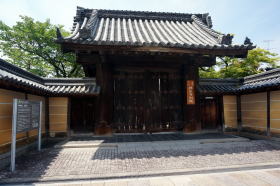 |
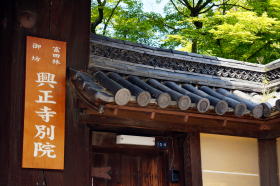 |
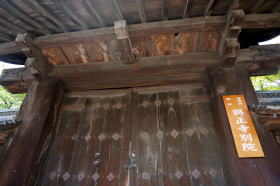 |
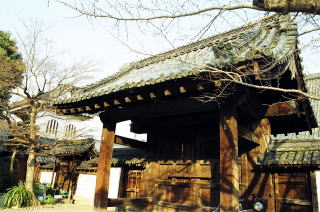 Temple Gate and Drum Tower(Precinct) |
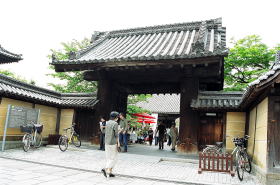 |
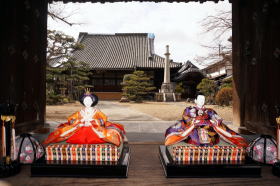 Jinaimachi Hina Festival(March) |
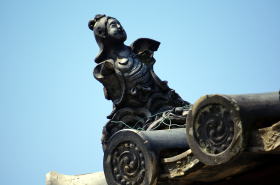 Amebuta-kawara (Temple Gate) |
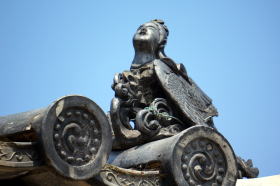 Amebuta-kawara (Temple Gate) |
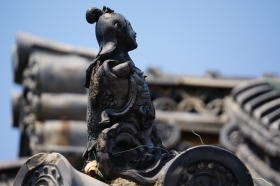 Amebuta-kawara (Temple Gate) |
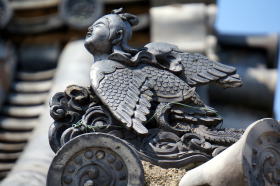 Amebuta-kawara (Temple Gate) |
| Main Hall・Taimensho(Important Cultural Property) | |
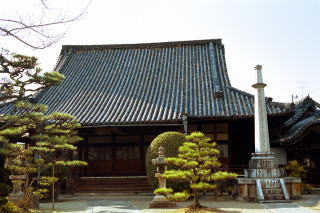 Main Hall |
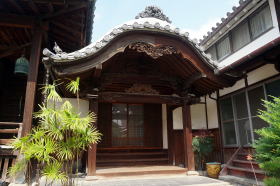 Taimen-sho |
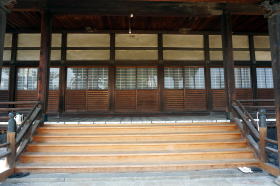 Main Hall |
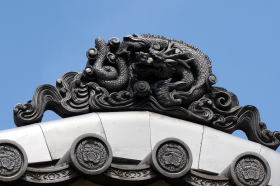 Taimen-sho |
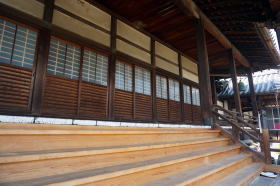 Main Hall |
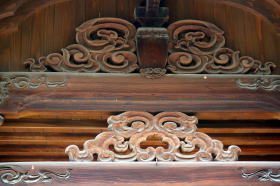 Taimen-sho |
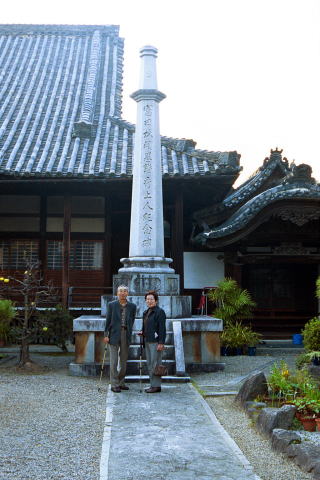 Memorial monument of Shoushuu Shounin |
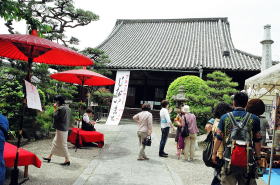 Precinct |
| Onarimon (Important Cultural Property) | |
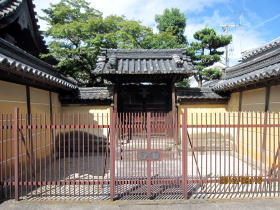 |
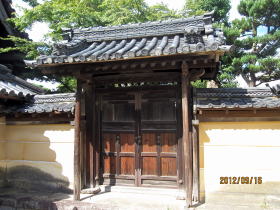 |
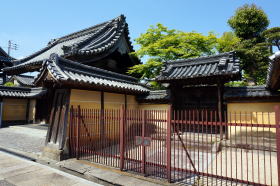 |
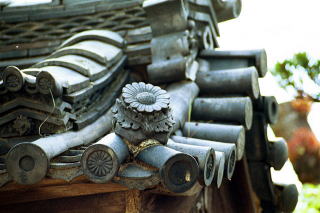 Amebuta-kawara(Onarimon) |
| Bell tower (Important Cultural Property) | |
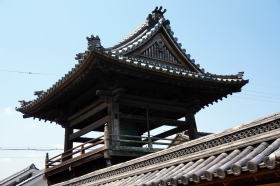 |
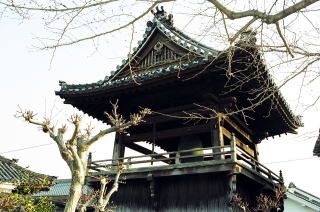 |
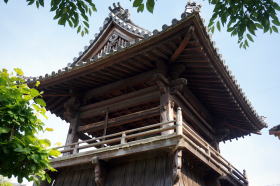 |
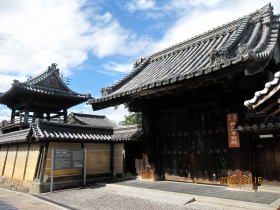 Bell Tower and Temple Gate |
| Drum Tower (Important Cultural Property) |
|
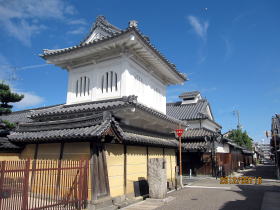 Drum tower and Jyounomon-suji street |
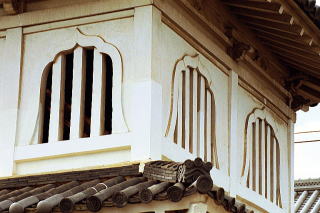 Drum tower and Katobado windows |
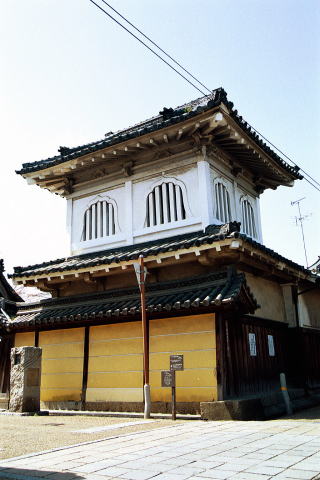 Drum tower and Katomado window |
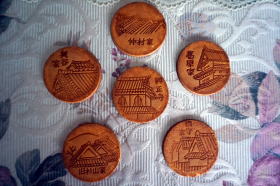 Koushouji Betsuin Temple (center), and turning clockwise, the Nakamura family (upper center), the (south)Kuzuhara family (upper right), the Tamori family(lower right), the former Sugiyama family (lower left), the (east) Okutani family(upper left) |
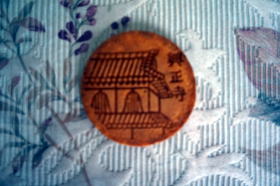 The design of Katomado of Drum tower has been adopted to Jinaimaichi cookies The design of Katomado of Drum tower has been adopted to Jinaimaichi cookies |
|
| Kuri - Priests' Quarters | |
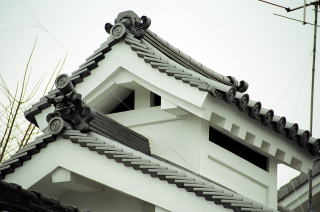 Chimney and ridge-end tile |
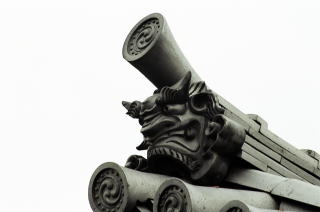 Ridge-end tile |
| Jyounomon-suji street and Memorial Monument of the 100 selections of roads in Japan | |
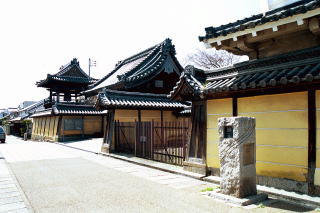 Jyounomon-suji street |
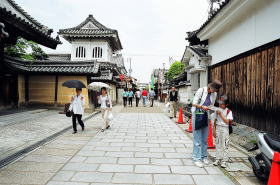 Jyounomon-suji street |
 Memorial Monument of the 100 selections of roads in Japan(Koushouji Betsuin Temple) |
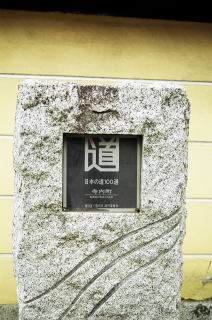 Memorial Monument of the 100 selections of roads in Japan(Koushouji Betsuin Temple) |
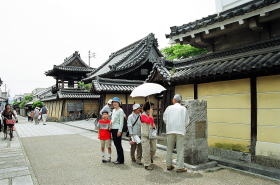 |
|
| 【Tourist guide to Jinaimachi town, Tondabayashi, a histric district and heritage site of Japan, Koushouji BetsuinTemple Page 1/5】 | |
| 【Tourist guide to Jinaimachi town, Tondabayashi, a histric district and heritage site of Japan, Koushouji BetsuinTemple Page 2/5】 | |
| 【Tourist guide to Jinaimachi town, Tondabayashi, a histric district and heritage site of Japan, Koushouji BetsuinTemple Page 3/5】 | |
| 【Tourist guide to Jinaimachi town, Tondabayashi, a histric district and heritage site of Japan, Koushouji BetsuinTemple Page 4/5】 | |
| 【Tourist guide to Jinaimachi town, Tondabayashi, a histric district and heritage site of Japan, Koushouji BetsuinTemple Page 5/5】 | |
Information
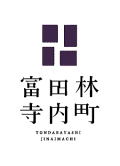
Open to the public
Denomination
Shin Shuu School Koushouji Sect.
Location
Jyounomon suji street and Sakai machi street (Sakai suji street)
During the Ouei period (1394-1412 years) , the incipient temple was opened
in Ebitani
Features of the building
The temple gate looks toward the east and the Jyounomon-suji street. Those buildings such as the bell tower, the drum tower, the main hall,
the reception hall and priest's quarters are set up and arranged. The main
gate has refined style and it became clear in a recent investigation that
the gate was further relocated from Koushouji temple in Kyoto, which was
originally said to be dismantled and reconstructed from one of the gates
at Fushimi castle in Kyoto.
It has a Yakui-mon style structure. The gate was re-relocated from the
north gate of Koushouji temple in Kyoto, that had been handed down from
one of the gates of Fushimi Castle. The scale of the gate is larger than
average one of temple and it is said to ensure a height that warriors could
pass across on the horse. The main street of the town in front of the gate
is called Jyounomon-suji street, which was literally named after the castle
gate.
Amebuta-kawara
Decorative tile that lies at the corner of the roof, covering the junction
of the roof tiles.. The decoration of animals can be often seen. It is
also called Tomebuta Kawara.
Main Hall(Important Cultural Property)
The main hall is the oldest building among those of the Jodo Shinshu sect.
temples in Osaka Prefecture. Main hall was used as a small private school
in the Edo era and it is the predecessor of Tondabayashi Elementary School
today. Before World War II, the elementary students visited the temple
to celebrate the foundation festival of the temple and candy was handed
out to children on the occasion, while many stalls were open on the street
in front of the temple. During World War II, there was a record that the
temple accepted students of Hirano Elementary School in Osaka to live in
the temple as school evacuation of the war fire.
Memorial monument of Shoushuu Shounin
Next to the main hall, there is a memorial monument of Shoushuu Shounin,
who was the 16th head priest of Koushouji temple in Kyoto and the founder of Koushouji
Betsuin temple (Tondabayashi Gobo). Built in 1896. Given the history is
that Tondabayashi Jinaimachi town was established around Koushouji Betsuin
Temple and it has prospered as an economic center of Minami-Kawachi region
after that, Shoushuu Shounin could be called as father of exploitation
of Tondabayashi.
Onarimon (Important Cultural Property)
The small annexed gate next to the temple gate. Chrysanthemum crest has
been decorated in Onarimon (gate for Imperial envoy). The gate was relocated in the late Edo period. It is a highly decorative
gate even small in scale and the building age dates back to the mid-Edo
period, but unknown where it had been originally located. It is believed
to have been relocated to the current location at the same time when main
temple gate was relocated from Koushouji Temple in Kyoto in 1857.
Though there is the record Crown Prince Hirohito (the Showa Emperor) visited
ruins of Akasaka Castle in 1917, the birthplace of Kusunoki Msashige, but
it is unclear whether he also visited Koushouji Betsuin Temple on this
occasion.
Built in 1810, the building was located in the southeast corner of the
precinct. The tower of tetrahedral has no walls and the bell have been
suspended in the center. Bell has been rung on such occasions as Spring
Festival (Foundation Festival to celebrate Shoushuu Shounin) , Autumn Festival (Gratitude Lecture to celebrate Shinran
Shounin) and the bell on New Year's Eve., too.
Drum Tower (Important Cultural Property)
Built in the late 18th century, older than the bell tower, it has been
relocated to the northeast corner of the precincts in 1810. It is a two-story
storehouse building with thick earthen walls. The windows of the second
floor is characterized as Katomado style.
The site-seeing map available in English
Please stop by to the Tourist Information Cetnter or Jinaimachi Visitor
Center.
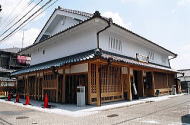
Visitor Center
(Jinaimachi Kouryuukan,
Town Community Center)
Address
9-29, Tondabayashi-cho, Tondabayashi city, Osaka, 584-0033, Japan
TEL.+81-(0)721-26-0110
FAX.+81-(0)721-26-0110
open 10a.m. until 5 p.m.
closed on Monday
Restrooms
Available at Jinaimachi Visitor Center (Jinaimachi Kouryuukan), Jinaimachi
Center and Jinaimachi Tenbou Hiroba (Viewing Terrace)
Visitor Parking
Road width is very narrow in Jinaimachi town. If traveling by car, please
use Tondabayashi Municipal east parking newly opened in February 2014 (Toll
parking).
You can park the minibus for groups and passenger cars for general use.
Only one parking lot available for minibus, you must book it in advance
with Tondabayashi City Hall. A 15-minute walk to the Jinaimachi Visitor
Center and 5 minute walk up to the former Sugiyama family house, an important
national cultural property.
You will note that the large tourist bus for groups is requested to be
parked at the Tondabayashi City Hall No. 2 parking lot alongside the old
Route 170 (It must be booked in advance to City Hall). 20-minute walk to the Jinaimachi
Visitor Center and 10 minute walk up to the former Sugiyama family house,
an important national cultural property. Thank you in advance for your
kind cooperation.
